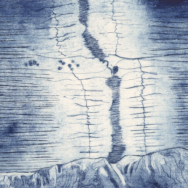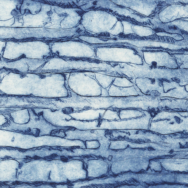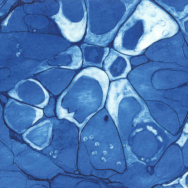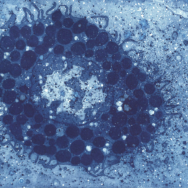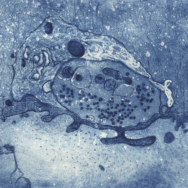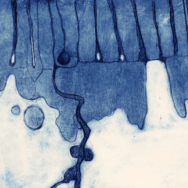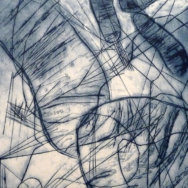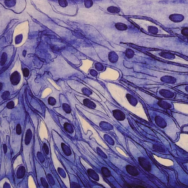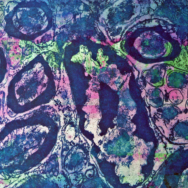Posts made in September, 2010
Muscular Contraction
Muscular contraction depicts part of a sarcomere, the basic unit of striated muscle. Groups of sarcomeres compose myofibrils. In Muscular contraction, we see the bands and lines that characterize muscle as seen through the polarizing microscope. Whenever a muscle contracts to move any part of the body these bands, which are composed of fibrous proteins, slide their position in relation to each other. Hundreds of thousands of sarcomeres contract our muscles in response to nerves stimulation, a typical biceps may contain 100,000 sarcomeres.
This piece was made as a Plexiglass engraving and printed on paper. It was part of Melissa Belli’ s solo show, Animalcules: an Exploration of the microcosm within, that took place in Venice, Italy on November, 2010.
Read MoreMast Cell
Etching on zinc plate of a mast cell. Mast cells are part of the immune system, the granules in it’s cytoplasm are loaded with histamine. When these cells are activated they release the granules into the surrounding tissues causing irritation, vasodilation, sneezing, itching and the like. They are very active during allergic reactions.
Read MoreThe Chemistry of Thoughts
This is a plexiglass engraving of a synaptic cleft. Neurons meet one another at these junctions and exchange chemicals that then trigger an electric impulse in the neuron, thereby transmitting information.
Read MoreCellular Junction
This plexiglass engraving on paper depicts a tight cellular junction. Cells attach to each other by means of several types of junctions. A tight junction is a type of junction that brings together the membranes of two adjacent cells but that is impermeable. This type of junction is only present in vertebrates.
Read MoreMitochondria lines
Another plexiglass engraving on paper. Mitochondria are the powerhouses of cells, they have their own DNA that is for the most part only inherited through the maternal line (as they are present in the egg). Mitochondria are believed to be organisms that developed a symbiotic relationship with more complex cells.
Read MoreEndothelium
Plexiglass engraving on paper. This image shows the endothelial lining of blood vessels. The source materials for this work were provided to me by researcher Nicolas Foin from Imperial College London. Endothelial cells are very important in the pathology of coronary artery disease and other vascular diseases.
Read More
